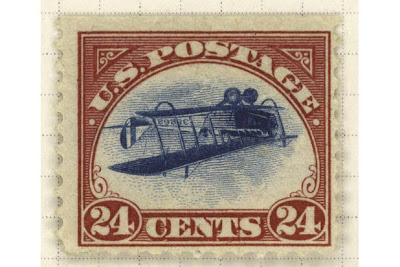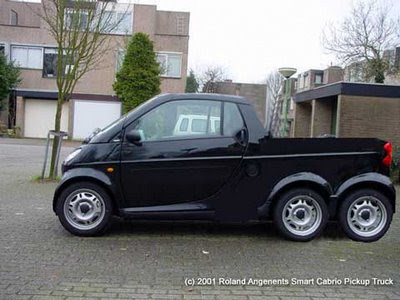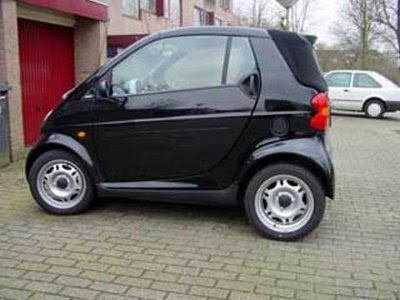Alien-Like Being Born From A Cow In Thailand

This dead alien-like being found in a small town in Thailand was claimed to be born from a cow and seems at first to be a severe case of birth malformation defect. A closer examination however reveal that the alien being resembles too much of a human baby with its front legs looking more like hands than feet.
In the form of a ritual, the local residents pour baby powder onto the dead body and burnt incense in their belief of cleansing the area of evil and hopeful that it will be reincarnated peacefully.






Some time we have to trust other more then us





Amazing Auctions

Artist Lucian Freud's 'Benefits Supervisor Sleeping' painting sold for $33.6 million at Christie's auction house in London on May 13. It set a record for the most money paid for a work by a living artist.

This letter, in which Albert Einstein wrote of his disdain for religion, sold for $404,000 at a London auction, Bloomsbury Auctions said on May 16. The buyer was identified only as a collector with "a passion for theoretical physics."

The painting 'Le Pont du chemin de fer a Argenteuil' by Claude Monet sold for $41 million at a May 6 auction at Christie's in New York. The price broke the auction record for the French impressionist. The previous record was $36.5 million for his 'Nympheas,' which sold last year.

Would you pay $1,350 for a corn flake shaped like the state of Illinois? That's what one pair of sisters pulled down on eBay after they auctioned off this flake they found one morning at breakfast.

A pear-shaped 72.22-carat diamond, expected to bring up to $13 million when it goes on the auction block next month, is seen during a press preview Monday March 10, 2008 at Sotheby's in New York. The D-color, flawless diamond will be sold April 10 at Sotheby's Hong Kong galleries.

Among a set of 300 rare pennies that sold for $10.7 million was this 1794 penny, which is the size of a modern-day quarter. This single coin sold for $632,500.

A 1918 "Inverted Jenny" stamp, perhaps the world's most famous stamp misprint, recently sold for $825,000 in a private sale to an anonymous buyer in New York. Another copy sold at auction last month for $977,500.

This globe, which once belonged to Adolph Hilter, sold at San Francisco's Greg Martin auction house for $100,000 in October. An American soldier snagged the memento from the Furher's country home in 1945.
Labels: Amazing
6 ways you're wasting gas
6 ways you're wasting gas
It's not easy to break bad driving habits, but if you don't, the money you lose on gas could wind up breaking your bank.
With all the worry over fuel prices, you'd think drivers would do whatever they can not to waste gas. But look around and you'll see lots of them tooling around as if they owned their own tanker fleet. One of them might be you.
Here are six ways drivers typically waste gas every on every trip:
1. Racing away from green lights
When the light turns green, you don't have to take off as quickly as possible. That pedal under your right foot is called the "gas pedal" for a good reason. The more you press down on it, the more gas you're pumping into the engine.
Press lightly on the gas pedal, and you'll still accelerate, and you'll still get where you're going. You might be surprised at how little pressure it takes to get your car up to speed in a reasonable time.
2. Racing up to red lights
When you're driving down the street, and you see a light red light or stop sign up ahead, you should lay off the gas sooner rather than later.
There's no point in keeping your foot on the gas until just before you reach the intersection. Let off the pedal sooner and give your engine a rest as you coast to the stop while braking gently. As an added benefit, your brake pads will last longer, too.
By themselves, these first two tips can improve your fuel economy around town by as much as 35 percent, according to tests conducted by automotive information Web site Edmunds.com.
3. Confusing the highway with a speedway
Even if it doesn't involve hard acceleration, speeding wastes gas. The faster you go, the more air your vehicle has to push out of the way. It's like moving your hand through water. The faster you try to move your hand, the harder the water pushes back.
In tests by Consumer Reports, driving at 75 miles per hour instead of 65 miles per hour reduced fuel economy by between 3 and 5 miles per gallon, depending on the vehicle.
4. Bumper-buzzing
Tailgating is a bad move for many reasons. First of all, it's unsafe. You reduce your ability to react if the car in front of you slows or stops. It also means you have to pay ultra-close attention to that car which reduces your ability to scan for other hazards ahead of you and to the sides.
And tailgating wastes gas. Every time the driver ahead taps his brakes, you have to slow down even more than he did. (That's because you can't react immediately so you have to slow even more because you're slowing down later.) Then you accelerate again to get back up to speed and resume your bumper-buzzing routine.
Hang back and you'll be safer - plus you'll be able to drive more smoothly and use less fuel. A good rule of thumb is to allow two seconds of space between your car and the one ahead. You can figure that out by counting off two seconds after the car in front of you passes an obvious landmark like an overpass.
5. Driving standing still
You've probably heard that it takes more gas to restart a car than to let it run. Maybe that used to be true, but it isn't anymore. With modern fuel-injection engines, it takes very little extra gas to restart a car once it's warmed up.
Idling, meanwhile, burns about a half-mile worth of gas every minute, according to the California Energy Commission. That's why hybrid cars shut down their gasoline engines whenever they stop, even for a moment.
Now you don't want to shut your engine down for every little stop in your regular, non-hybrid car - it's not designed for that - but if you're waiting for someone to run in and out of a convenience store, turn off the engine.
And don't go through the drive-through at fast food restaurants. You're already paying enough for the oil in those chicken nuggets.
Bonus tip: Don't idle your engine to let it warm up before driving. It does your engine no good and it wastes gas. Instead, start driving right away, but drive gently until the engine is warm.
6. Short hops
For really short trips, take advantage of the opportunity to get some exercise. Try walking to the store instead of driving. You can save gas and burn a few calories instead.
If you can't hoof it, save up your errands. A lot of short hops that let the engine cool down at home between trips can use twice as much gas as starting the car once and making a big sweep to all your stops, according to the U.S. Department of Energy.
Go to your farthest destination first so your engine has a chance to reach its optimal operating temperature. Then make your other stops on the way back. With the engine warmed up, the car will restart easily and run efficiently all the way home.
It's not easy to break bad driving habits, but if you don't, the money you lose on gas could wind up breaking your bank.
With all the worry over fuel prices, you'd think drivers would do whatever they can not to waste gas. But look around and you'll see lots of them tooling around as if they owned their own tanker fleet. One of them might be you.
Here are six ways drivers typically waste gas every on every trip:
1. Racing away from green lights
When the light turns green, you don't have to take off as quickly as possible. That pedal under your right foot is called the "gas pedal" for a good reason. The more you press down on it, the more gas you're pumping into the engine.
Press lightly on the gas pedal, and you'll still accelerate, and you'll still get where you're going. You might be surprised at how little pressure it takes to get your car up to speed in a reasonable time.
2. Racing up to red lights
When you're driving down the street, and you see a light red light or stop sign up ahead, you should lay off the gas sooner rather than later.
There's no point in keeping your foot on the gas until just before you reach the intersection. Let off the pedal sooner and give your engine a rest as you coast to the stop while braking gently. As an added benefit, your brake pads will last longer, too.
By themselves, these first two tips can improve your fuel economy around town by as much as 35 percent, according to tests conducted by automotive information Web site Edmunds.com.
3. Confusing the highway with a speedway
Even if it doesn't involve hard acceleration, speeding wastes gas. The faster you go, the more air your vehicle has to push out of the way. It's like moving your hand through water. The faster you try to move your hand, the harder the water pushes back.
In tests by Consumer Reports, driving at 75 miles per hour instead of 65 miles per hour reduced fuel economy by between 3 and 5 miles per gallon, depending on the vehicle.
4. Bumper-buzzing
Tailgating is a bad move for many reasons. First of all, it's unsafe. You reduce your ability to react if the car in front of you slows or stops. It also means you have to pay ultra-close attention to that car which reduces your ability to scan for other hazards ahead of you and to the sides.
And tailgating wastes gas. Every time the driver ahead taps his brakes, you have to slow down even more than he did. (That's because you can't react immediately so you have to slow even more because you're slowing down later.) Then you accelerate again to get back up to speed and resume your bumper-buzzing routine.
Hang back and you'll be safer - plus you'll be able to drive more smoothly and use less fuel. A good rule of thumb is to allow two seconds of space between your car and the one ahead. You can figure that out by counting off two seconds after the car in front of you passes an obvious landmark like an overpass.
5. Driving standing still
You've probably heard that it takes more gas to restart a car than to let it run. Maybe that used to be true, but it isn't anymore. With modern fuel-injection engines, it takes very little extra gas to restart a car once it's warmed up.
Idling, meanwhile, burns about a half-mile worth of gas every minute, according to the California Energy Commission. That's why hybrid cars shut down their gasoline engines whenever they stop, even for a moment.
Now you don't want to shut your engine down for every little stop in your regular, non-hybrid car - it's not designed for that - but if you're waiting for someone to run in and out of a convenience store, turn off the engine.
And don't go through the drive-through at fast food restaurants. You're already paying enough for the oil in those chicken nuggets.
Bonus tip: Don't idle your engine to let it warm up before driving. It does your engine no good and it wastes gas. Instead, start driving right away, but drive gently until the engine is warm.
6. Short hops
For really short trips, take advantage of the opportunity to get some exercise. Try walking to the store instead of driving. You can save gas and burn a few calories instead.
If you can't hoof it, save up your errands. A lot of short hops that let the engine cool down at home between trips can use twice as much gas as starting the car once and making a big sweep to all your stops, according to the U.S. Department of Energy.
Go to your farthest destination first so your engine has a chance to reach its optimal operating temperature. Then make your other stops on the way back. With the engine warmed up, the car will restart easily and run efficiently all the way home.
Labels: Gas
The Art Of Time Management

How often do you wish there were 48 hours in a day? As a college student,you have just about five years at your disposal: three-four years at the Bachelor's level and two years at the postgraduate level.How you manage this limited span of time to allow for a variety of activities — balancing the multiple work pressures as you tackle the vast syllabus and class projects, preparing for college elections and activities and studying for internal and competitive exams — will determine whether you sink or sail.
Remember: The secret lies in how you utilise the time at hand. It's only the busy person who has time for everything. When we say that we have no time, it simply means that we are unable to manage our time properly. The fact is that if we take care of the minutes, the hours will take care of themselves.
In college as in life, you can't read everything, you can't do everything; you can't learn everything. Assigning the same priority to each task is to wind up with 40 tasks all tied for first call on your time. Who wouldn't like to participate in extra-curricular activities without losing focus of curricular tasks? But then there are assignments, homework, tutorials, self-study - you have to manage all these as well.
So what is the actual time available to a student in one academic year? Of the 8,760 hours in a year, you will spend roughly 900 in the classroom, 30 in taking exams and 90 on co-curricular activities. Knock off roughly 2,555 hours of sleep (seven hours per-day), about 730 hours for food and another 1,095 hours for personal relaxation, grooming and sundry chores, and you are left with barely 3,360 hours for study and personal development.
The challenge always with new plans and renewed motivation is time. Simply put, there's just not enough to go round.
Time management, is basically utilising the time at your disposal in the best possible way to strike a harmonious balance between your physical, social, emotional, intellectual and recreational activities.
While there's no formula, time management rests on three basic pillars — Understanding the value of time; Budgeting time judiciously; Focussing on the task at hand.
Here are 10 tips to help you manage your time more effectively:
Time is precious:
Time is unidirectional. Once lost, it's gone forever. It is therefore essential to value it as a limited and fleeting resource. Wasted time is one thing that can't be recycled.
Leverage your own time:
Look at how you spend time in a typical day. What can you stop doing, or do less of? If you use your time carefully, you will have more of it for things that make a difference.
Budget your time:
Even more than money,we need to budget our time judiciously. The art lies in laying down priorities for work, fixing minimum and maximum time slots for different activities and managing within the 24-hour day. Never close a week without planning a schedule for the next one. Prepare a daily time schedule. But do factor in minor adjustments. M a i n t a i n i n g re g u l a r i t y pays dividends.
Also, you can't possibly cut down on sleep, can you? A relaxed mind learns (and retains) far better and quicker than
one under tension. Make sure you budget some time for relaxation and exercise in your schedule, how so ever busy.
The early bird gets the worm:
An early start saves a lot of time. If possible, begin and complete your assignments and projects well in time to avoid undue tension. Don't wait till the very last moment to get cracking. Make ‘Defeat the Deadline’ your motto.
Table your intent:
Start by preparing a timetable. To draw up a schedule that will work for you, factor in your preferred style of study ie your ‘prime time’ (you will find that you function at your peak at a particular time, this is the best time to handle ‘tough’ tasks). Similarly, make a note of your average attention span. Only you know which learning method works best for you. Then, match your style with the course requirements. Each study period must
cover one learning objective. Ideally, it should not exceed beyond 90 minutes. Although individual attention spans can vary somewhat, research on learning patterns shows that the speed and effectiveness of learning changes with time. After about 25 minutes, the attention curve begins to dip.Teachers are aware of this and attempt to restart the curve every 20 minutes or so by introducing a new activity like asking a question or cracking a joke to liven things up and change the pace.
Create a learning environment:
An environment conducive to learning is useful. If you think you can sit or curl up anywhere and learn, you may be wrong. The most comfortable environment does not necessarily promote learning. The best environment is one where you feel motivated, alert and reasonably comfortable to study.
Jot it down:
How often do we find ourselves mumbling, "If only I could remember…" The simple solution to this problem is to always carry a pencil and paper with you. The moment you get a unique idea or you hear something noteworthy — just scribble it down, and file it where it is easily accessible. This is an absolute time saver!
Watch out for potential time-wasters:
Lack of selfdiscipline, idling, daydreaming, procrastinating (putting off or postponing unpleasant or difficult tasks), focusing on trivia, aimless channel surfing or browsing the Net are some of the most notorious time wasters to avoid. They surreptitiously whittle away at time without you even realising it.
Prioritise your interests.
There are just that many hours in a day. Its better to concentrate on a few select interests and hone them to perfection instead of trying to dabble in a large number of activities that leave you exhausted and unsatisfied.
Seek help:
Despite all the planning and determination, you may, at times, find that you are unable to stick to your schedule. At such times, seek help from someone close to you. Discuss your goals and enlist their help in helping you stick to your schedule.
Time management is a 'skill' and, an 'art' that we can develop through careful practice. And the sooner we start the better.
Remember you have the same 24 hours per day that were given to Helen Keller, Mother Teresa, Louis Pasteur, Michelangelo, Leonardo da Vinci or Albert Einstein. It's how you use it that makes the difference.











